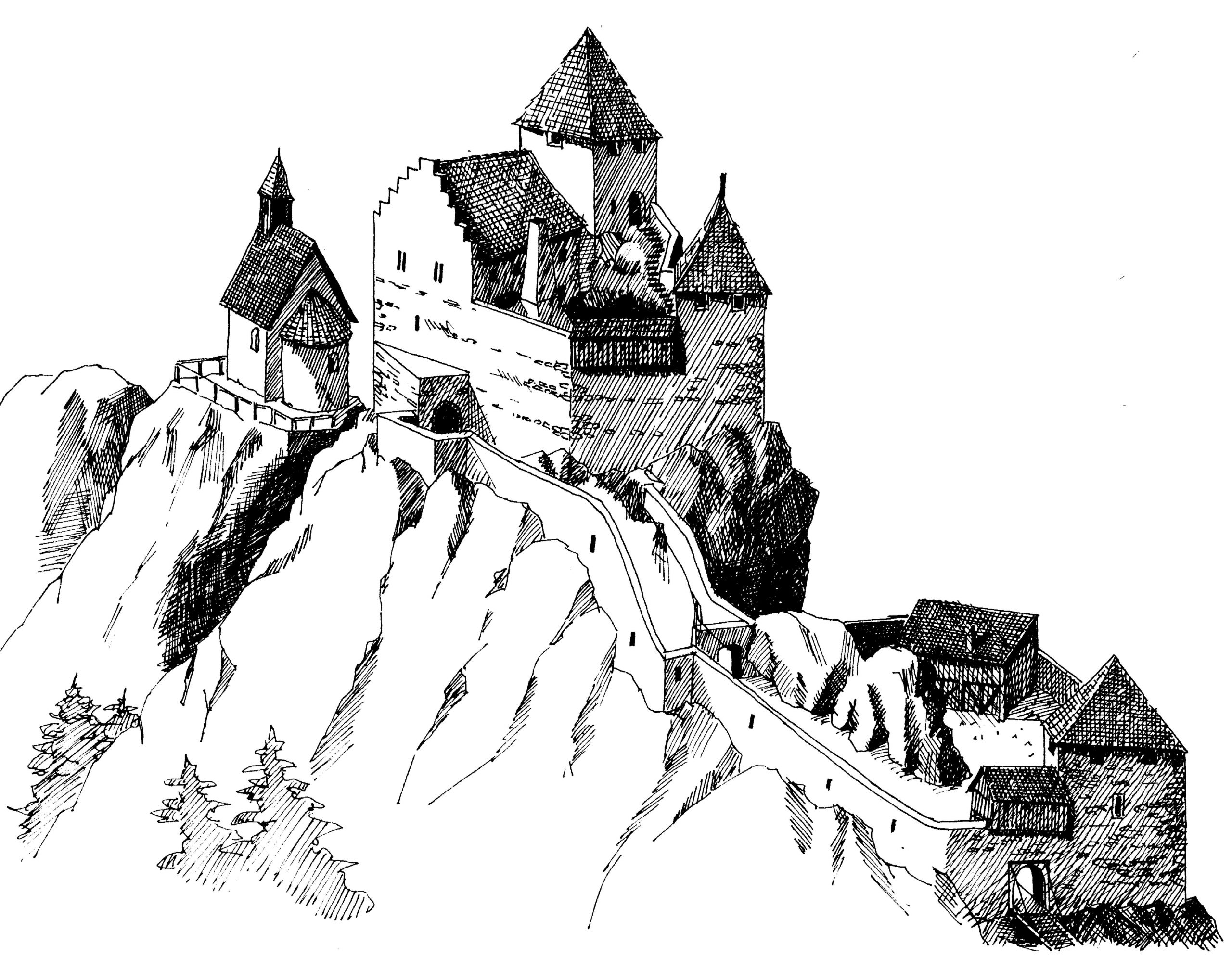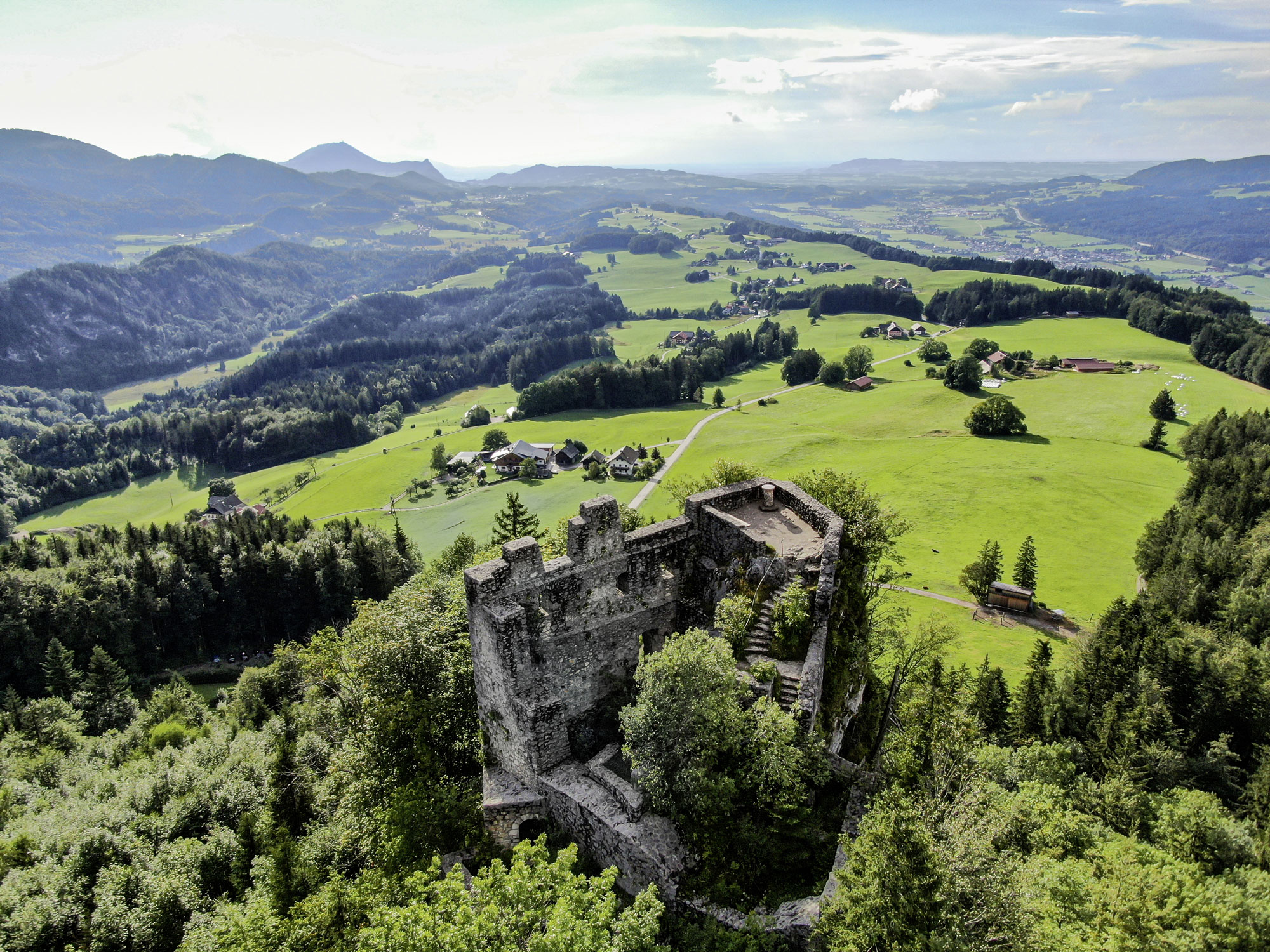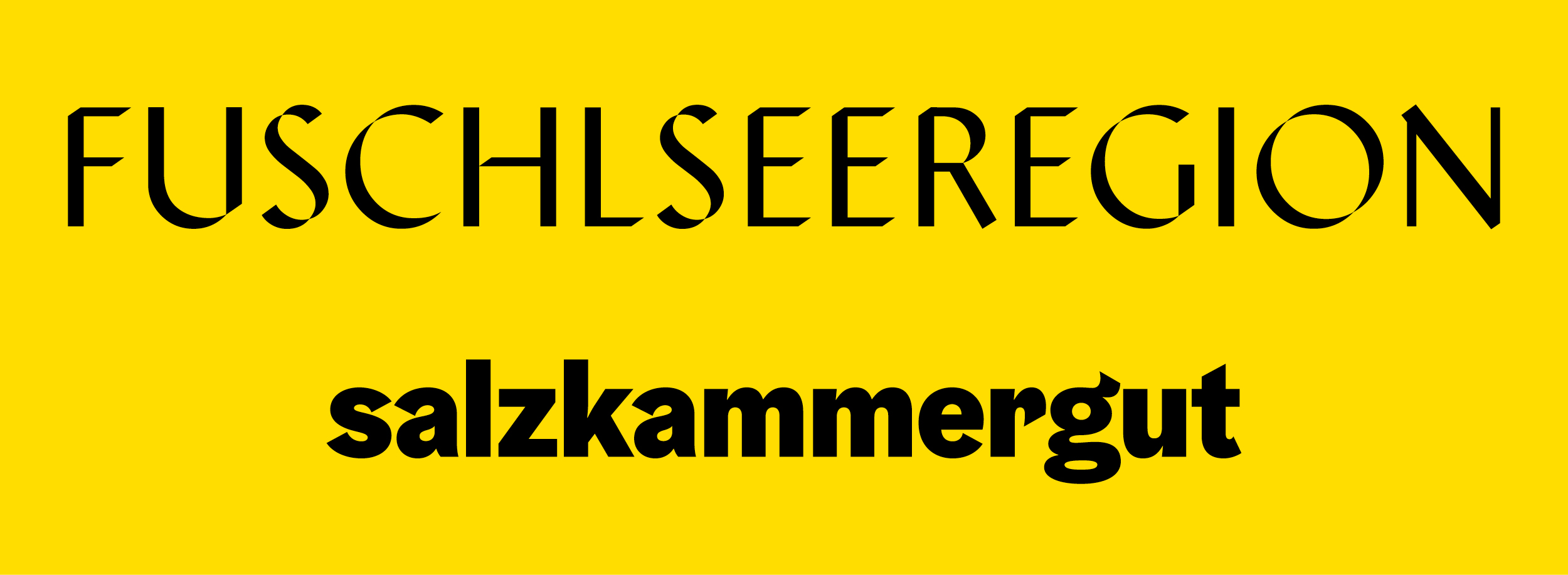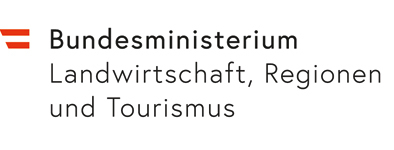
The Border Fortress
Wartenfels Castle was built in 1260/61 by Konrad v. Kahlham (it is still possible to visit the castle ruins in Thalgau parish today). Its purpose was to defend the border of the archbishopric of Salzburg against the Bavarian Mondsee region. Salzburg remained a separate state (an ecclesiastical-imperial principality) until 1803 and was separated from Austria by a state border. In 1816, after five changes in ownership, Salzburg finally joined Austria.
Salzburg joined Austria in 1816
Wartenfels Castle was the seat of the guardian. This high-status civil servant was appointed by the archbishop. He was responsible for the entire judicial region as the judge, the highest administrator and the military and police commander.
The Wartenfels guardian court included twelve so-called Rügate
There were no municipalities before 1848. Instead, the judicial district was arranged into so-called »Rügate« (from the German for admonish, judge, order = »rügen«). The Wartenfels guardian court consisted of twelve such Rügate: Elsenwang and Schroffenau (today parts of Hof parish near Salzburg and Schroffenau, also some of Ebenau) as well as Thalgau-Village, Vetterbach, Thalgauberg, Enzersberg, Fischerweng, Thalgauegg, Fuschl, Faistenau, Tiefbrunnau and Hintersee.
After the castle was slighted in the Peasants’ War of 1525/26, the guardian moved to Thalgau, now living on the outer edge of his judicial district. Given the size of the district, trials were now held at various locations – based on folk memory, these included Faistenau (under the lime tree), Fuschl am See (near Schefbaum = Schöffbaum)
and Hof near Salzburg (near Kirchbichlhof).

Ruine Wartenfels, Thalgaueggblick, © Fuschlseeregion
Verwendete Quellen und Literatur:
Haas, Karl: »Thalgauer Heimatbuch«, 1. Aufl., Salzburg 1976.
Iglhauser, Bernhard: »Goldbrünnlein und Wettervogel«, Innsbruck 1994.





